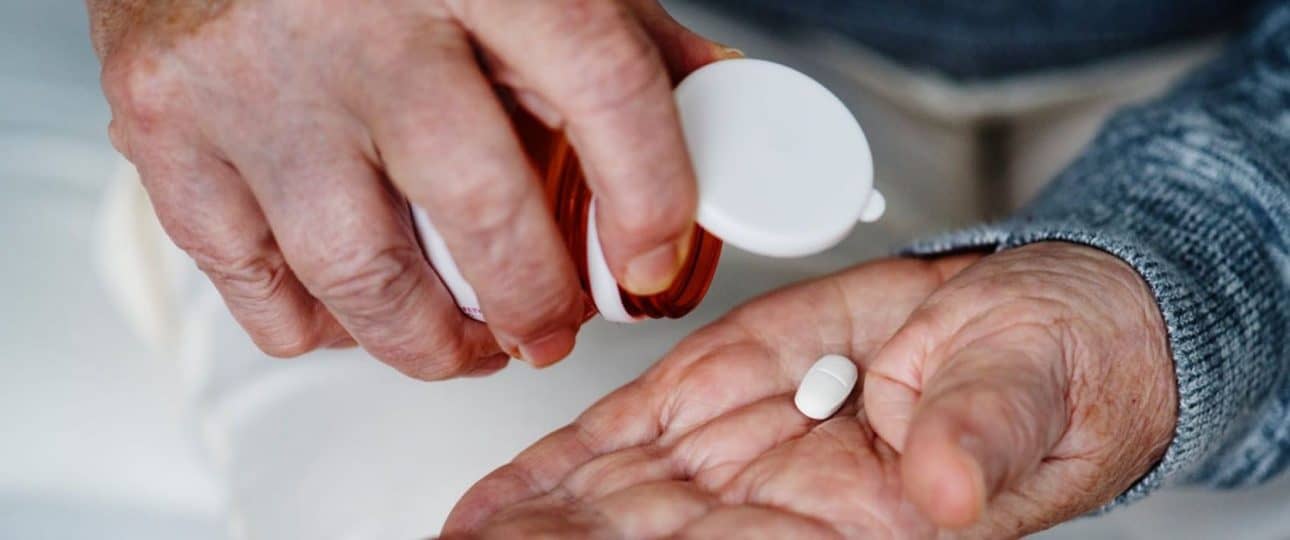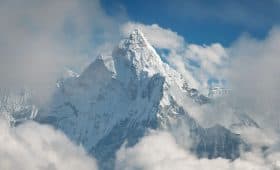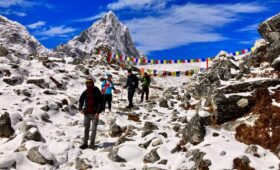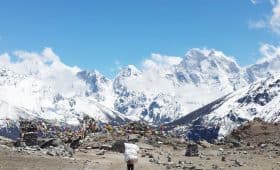Many trekkers fear the possible dangers during the Everest Base Camp trek because its height is 17,598 feet. So, along with the trek planning and preparation, they surely want to plan the trek medicine for Everest Base Camp.
What are some of the best medicines to carry while trekking in Nepal?
Which medicines should be kept for trekking in Nepal and other places?
All of such questions and a list of must have medication for everest base camp are covered in this blog.
But here is what you should know…
Everest Base Camp trek is a high-altitude trek going above 5000 meters. And, trekking to the Everest Base Camp or any other similar high-altitude area is never 100% risk-free. So, anyone trying to fulfill their dream must keep necessary medicine for trekking.
The biggest problem trekkers face during the trek Is Everest Base Camp height. You will face risky/unfavorable terrain, unpredictable weather and you are going out of your comfort zone. On your journey from Lukla to Everest Base Camp you will ascend total of 2935 meters (from 2610 meters at Lukla to 5545 meters at Kala Patthar), you are quite prone to altitude sickness reaching such elevation.
As mentioned above, trekking in high mountains areas like Everest Base Camp comes with inherent risks. That’s why it is important to prepare well in advance with proper preparation of gears, medicine for trekking, etc.
However, before taking the Everest Base Camp trek it is advisable to visit your personal physician for a medical checkup. They will diagnose if you have any underlying problems. You will also get proper guideline about medicine to carry while trekking In Nepal. And, they will also be able to give you the green signal for the Everest Base Camp trek if you are doing good physically and mentally.
Your doctor can provide you authentic information about trek medicine for Everest Base Camp along with any personal suggestions that will help you make it to the world’s highest mountain.
Besides medication, daily exercises and mental preparation is also very important for one to take the trek and complete journey to Everest Base Camp. Best activity you can enjoy before trek is with Mosaic Adventure Lakeside Camping.
With this, you get some extra strength from different fun physical games and challenges. Preparing yourself for successful Everest Base Camp Trek requires both physical and mental training well in advance before signing up for this great Himalayan adventure.
For participants who have existing health related issues, doctors’ permission is a must and they should know which medicine to carry while trekking in Nepal to maintain their health. While the participants with serious cases of diabetes, asthma, kidney ailment or cardiac problems need frequent monitoring; therefore, always inform pre-existing conditions to your tour operator and trekking guide who is going to accompany you throughout your adventure from Lukla to Everest Base Camp. Due to Everest Base Camp height, diarrhea is very common. To avoid such a situation, you must check diarrhea medicine in Nepal. Obviously, you can’t self-prescribe and will always need a doctor’s assistance.
Following are some of the basic medical problems along with their medications that are necessary to be taken along for trekking. Wise people say, it is always good to have precautionary measures to stay healthy, fit, and safe while trekking on the Everest Base Camp.
Table of Contents
- Medical Problems During the Everest Base Camp Trek
- Medication for Everest Base Camp trek
- Emergency Medication for Everest Base Camp Trek
- Other Medication for Everest Base Camp Trek
- How to Prevent Your Body from Sickness During EBC Trek?
- Frequently Asked Questions
- Is it easy to find diarrhea medicine in Nepal?
- What is the height of Everest Base Camp?
- Which Is the best pain killer medicine in Nepal?
- While camping on Everest Base Camp how to prepare if you have eczema?
- What should be the collection of mount Everest pills for trekkers?
- What are the other fun activities on mountains to enjoy before trekking?
- Last Say,
Medical Problems During the Everest Base Camp Trek

Altitude Dangers
While trekking into the mountains, altitude is a key factor that can affect your health. Trekkers usually take Diamox Everest Base Camp to avoid altitude sickness.
As you climb to a higher altitude, your body will not get enough oxygen. The lack of oxygen can cause altitude sickness. Altitude sickness generally occurs at altitudes of 3000m and above. People who aren’t accustomed to these heights are most vulnerable.
Climbing can cause immense pain so keep best possible pain killer medicine in Nepal.
Hence, every trekker must possess detailed knowledge of altitude sickness, its various symptoms, and precautions.
High Altitude Cerebral and Pulmonary Edema
This is a serious condition. Cerebral and Pulmonary Edema is the case when fluid gets collected inside the brain or the lungs.
In such a case, oxygen, Gamow bag treatment, Diamox are helpful, but the most important step is to take a rapid descent.
Both HACE and HAPE are a result of pushing in spite of AMS. They are an immediate consequence of too much and too fast altitude gains. In general, it is a result of the negligence to the body’s subtle warnings.
Frostbite and Hypothermia
Frostbite
Frostbite and frostnip typically occur in the hands, feet and sometimes ears and the nose. The tissue turns white and you lose the feeling in it. It eventually becomes black blisters and finally falls off.
You should thaw frostbite in cool water while gradually heating to lukewarm. In addition to thawing, you also need to administer antibiotics to prevent infections.
Not just that, you must know: Everest Base Camp how to prepare if you have eczema?
As most of us know, eczema is a common skin condition for trekkers. Don’t get worried or anxious. Instead, use moisturizers, wear loose comfortable clothes, and use “Dexamethasone Everest”. It is something that will enable skin to prevent dryness and itchiness (prominent symptoms of eczema).
Note: Never treat frostbite by rubbing it. While climbing, feel your feet sometimes by stretching toes and kicking the boots to improve circulation.
If you sense a loss of feeling in your feet, remove the boots and warm the feet. The herb Gingko Biloba is good to expand the fine capillaries which is helpful against frostbite.
Drinking lots of fluid like Neocitran Hrvatska or Neocitran Srbija are absolutely important. Good thing is that, frostbite while trekking to Everest Base Camp is rare but you can’t ignore the fact that there is a minor possibility of it. Trekkers must keep all the important Mount Everest pills before starting their trek to counter health issues.

Hypothermia
The condition of Hypothermia can kill the victim in only 30 minutes. Cold temperature, but also strong wind causes the body to rapidly lose heat. You start to shiver in order to maintain the body heat from the rapid muscular shaking.
As your body temperature drops, you will get dizzy and disoriented. Then the shivering stops. The body now maintains temperature only around the important organs, heart, brain, and lungs by restricting the blood circulation to the arms and legs.
To prevent hypothermia, add clothes as soon as you start feeling the slightest cold. Take windproof clothes, lightweight insulating jacket and hot water bottles in your backpack. Trekkers should carefully select mount Everest pills to use in such conditions.
And most importantly don’t continue the climb if you start to get the symptoms of Hypothermia.
Want more information? Send us your query, and our experts will get back to you within 24 hrs.
Medication for Everest Base Camp trek
General Medication
Apart from the regular prescriptions for already existing ailments trekkers can take Neocitran Hrvatska or Neocitran Srbija to cure themselves from cough flu and headache, other medications you need for Everest Base Camp trek are:
Medication for Diarrhea
Suffering from diarrhea causes dehydration and disturbance of the mineral balance in your body. For that, antibiotics will prove a helpful friend to you and pretty easy to find diarrhea medicine in Nepal. Imodium tablet Turkiye is the best medicine available to cure diarrhea.
Also, drink plenty and add electrolyte supplement. Since diarrhea is such pain while trekking, sometimes you will have to take the aid like Imodium to halt it.
However, you should be careful with these aids. They prevent your body to rid of the bad bacteria and will also affect your digestion. Hence, use Imodium tablet Turkiye or the equivalent only when you have to.
Medication for Cough
This cough is very debilitating to your climb. The dry and cold air will make you cough every step of the way. You will start to get slow and weak. This, if not treated well, it could spread to your lungs and can cause pneumonia.
The best way to prevent this is by wearing a mask that heats the breathing air and moisturizes it. You can also consume Neocitran hrvatska or Neocitran Srbija for cough, flu and sore throat.
If you don’t come down with the cough, the drug Codeine could help. However, the best cure is to trek down to for few days until its gone.
While if it spreads to your lungs, you will need antibiotics.
Medication for Heartburn
This is very common trouble in altitude. Take Zantac or Antacid to ease heartburn, especially at nights.
Emergency Medication for Everest Base Camp Trek
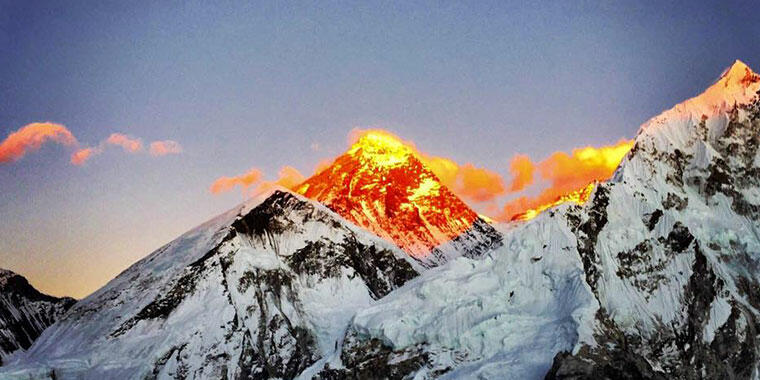
Epipen
These are adrenaline shots. It is usually to treat allergic shock or severe asthma. They are the lifesavers as well as killers on a mountain.
In a state of fatal exhaustion, the adrenaline might bring out some power in you, hopefully enough to make it down. Yet, it might just as well give you a heart attack in some cases.
The adrenaline shots are obviously an absolute last resort when all hope is out and you are dying anyway.
Trekking in the Everest Base Camp, you may not have to use them but it is always good to carry them.
Diamox
Diamox (Generic name) Acetazolamide is useful to prevent and reduce the symptoms of altitude sickness. They are common preventative medicine taken to lessen the symptoms of altitude sickness.
This medication reduces headache, tiredness, nausea, dizziness, and shortness of breath. They are basically the symptoms that occur when you climb to high altitudes in a short time. Some trekkers take Diamox Everest Base Camp to avoid altitude sickness before starting their trek.
It is particularly useful in a situation when you cannot make a slow ascent. The best ways, however, to prevent altitude sickness are by climbing slowly, taking a break during the ascends. This usually allows your body to adjust to the new height.
You can take Diamox with or without food. Drink plenty of fluids unless otherwise directed by your doctor.
To prevent altitude sickness on trek similar, start taking Diamox 1 to 2 days before you start to climb. Yet, if you develop severe altitude symptoms, Diamox will not protect you from the effects of severe sickness.

Decadron
This is a steroid used only in emergency situations. You will need immediate evacuation after taking it.
Decadron will relieve acute mountain sickness but not cure it. Don’t try to rely on Decadron while climbing. Bring it with you for serious situations only.
Nifedipine
This is another emergency drug but for Pulmonary Oedema. This lowers pulmonary artery pressure. Again after taking it, you need to rush down.
Gamow Bag
The Gamow bag is really helpful when trekkers or climbers suffer from altitude related illnesses such as HACE OR HAPE.
The bag rapidly decreases the altitude by a couple of thousand meters and can be the difference between life and death within hours.
It works as a converted dive-decompression chamber and builds pressure with a simple foot pump.
The Himalayan Rescue Association have one at Pheriche and most often there should be at least one around in Base Camp.
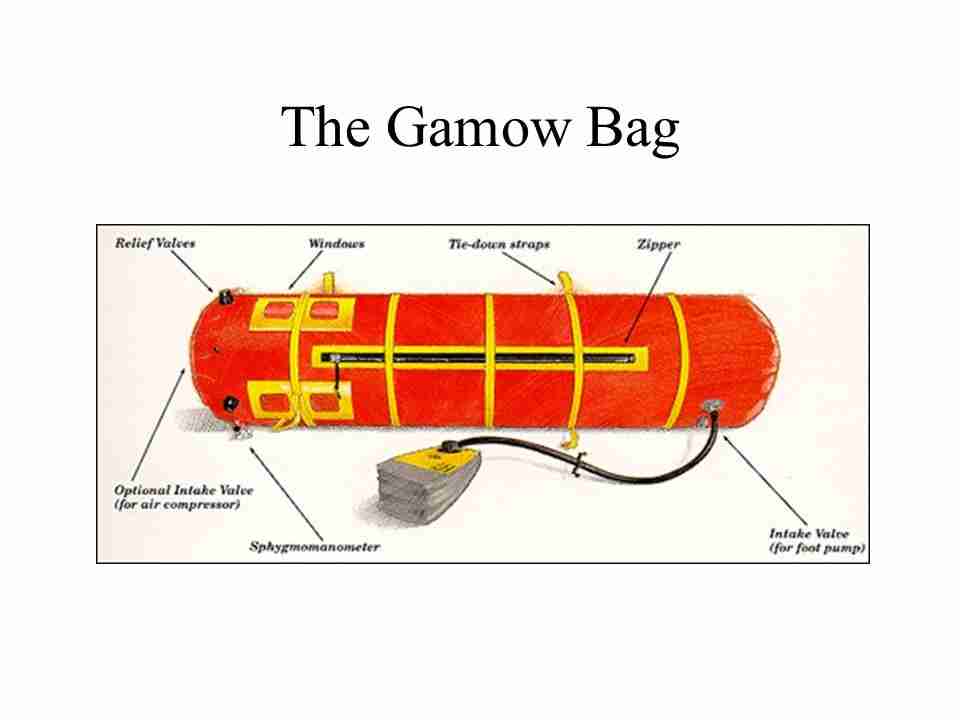
Oxygen
Use it for all severe altitude illnesses. You can use 2-3 liters/minute or less than that depending on the situation. Higher levels can be toxic. Always bring a spare emergency bottle between 2-3 climbers above C2 for rescue.
Other Medication for Everest Base Camp Trek
Ibuprofen
Ibuprofen is a nonsteroidal anti-inflammatory drug. It works by reducing hormones that cause inflammation and pain in the body.
Ibuprofen can reduce fever. It treats pain or inflammation caused by many conditions such as headache, toothache, back pain or minor injury.
Tylenol
Tylenol is a pain reliever and a fever reducer. Tylenol treats many conditions such as headache, muscle aches, arthritis, backache, cold and fever etc.
Topical Antibiotic
Topical antibiotics are an antibiotic cream or an ointment which you can apply directly to the skin in case of injury or any infection.
Antibiotics are medicines that destroy or inhibit the growth of susceptible bacteria. Some topical antibiotics are – Ciprofloxacin, Nebasulf powder, and Neosporin ointment etc.
Afrin
Afrin (for the nose) is useful for temporary relief of nasal congestion caused by allergies or the common cold.
Asthma Inhaler
Asthma inhaler is a hand-held, portable device that delivers medication to your lungs. Climbing to a higher altitude in the mountains can cause breathlessness esp for those who have poor lungs and asthma problem.
Hence it is very important to carry the inhaler. However, there are a variety of inhalers to help control asthma symptoms. Finding the right one and using it correctly can help you get the medication you need to prevent or treat asthma attacks.
Pepto Bismol
If you are in search of diarrhea medicine in Nepal then you can go for it. It provides relief from diarrhea and upset stomach due to overindulgence in food and drinks, including heartburn, indigestion, and nausea. Some find it useful to take it before a meal as a precaution.
Cold Remedies
Neocitran is single dose pouches of powder to make into a cup of hot liquid medication to help relieve your cold and flu symptoms. Natural remedies are ginger tea and an abundance of garlic including regular servings of garlic soup. Trekkers can also consume Neocitran Hrvatska or Neocitran Srbija to cure flu, cough, headache and sore throat.
Face Mask or scarf
For dry seasonal air on the trail which can get quite bad, use a face mask or scarf. These are also useful to cover your skin under the sun to prevent sunburn.
Hand Sanitizer
Small bottle of hand sanitizer works best. This is highly recommended in everyone’s kit. It is great to keep your hands clean in times when you don’t get to wash with water.
Band-Aids
These are gauze pads useful to protect cuts and lacerations. These help any wounds heal by keeping it clean and protected while you go about your day.
Splint
A Splint is a support device useful during different injuries. You can use it during broken bone, reducing pain, and preventing further injury. It allows you to move with ease.
Insect Repellant
During monsoon, there can be leeches and mosquitoes on your way in the lower altitude. Hence carry anti-leech spray containing DEET (Diethyl Meta Toluamide).
If you don’t have that, you can sprinkle salt on it. For mosquitoes, you can apply mosquito repellent lotion or rub lavender oil.
Water Purification Tablet
The three safe options for water purification are boiling, UV (like Steripen) or Chlorine Dioxide (but not Chlorine).
Each tablet of Chlorine Dioxide treats 1 liter of water. While you use water purification, it is wise to choose tablets instead of drops to avoid leakage problems.
Multivitamins
You can carry multivitamin tablets that you can put in water and take sometimes instead of just plain water. Also for women, iron supplements can be helpful. However, take the kind that your body will easily absorb.
Sunblock
Trekking during the day can be hot with the scorching sun even in the high altitudes. Hence it is a must to carry sunscreen with high SPF to protect your skin.
How to Prevent Your Body from Sickness During EBC Trek?
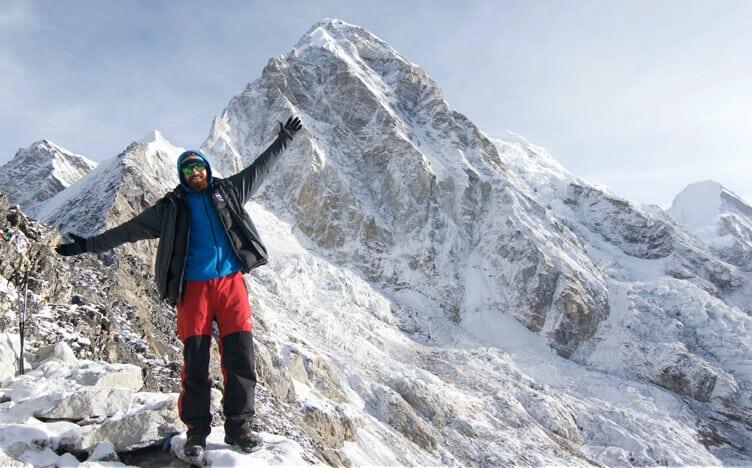
- Take enough time to climb and do not rush.
- Acclimatize properly.
- Stay at least 2 nights in Kathmandu before the trek.
- Keep 2 acclimatization day – one day at Namche Bazaar and one day at Dingboche.
- Drink lots of water to stay hydrated.
- while experiencing adventure on Everest Base Camp how to prepare if you have eczema? well Dexamethasone Everest is one of the best medicines for skin but you can consult any physician available there.
- Avoid drinking alcohol (it is one of the causes of dehydration).
- Eat properly cooked food and avoid meat consumption.
- Dress in layers and stay warm in the cold temperature. Never underestimate the packing for EBC trek.
- Reach out for help immediately in case of any early symptoms.
There isn’t any exact medication for Everest Base Camp that can help you avoid altitude sickness but you can take Diamox Everest Base Camp before starting trek. Therefore, prepare well, listen to your guide, be determined, walk slow and drink lots of water.
Frequently Asked Questions
Is it easy to find diarrhea medicine in Nepal?
Yes, you can easily find any kind of trek medicine. Due to Nepal’s trekking tourism, medicine for trekking is widely available.
What is the height of Everest Base Camp?
Everest Base Camp Is situated at hefty height of 17,598 feet.
Which Is the best pain killer medicine in Nepal?
If you are going to trek Everest Base Camp, Brufen or Brucet are the best pain killer medicines you can buy.
While camping on Everest Base Camp how to prepare if you have eczema?
If you are suffering from eczema while camping on mount Everest then use moisturizers and wear comfortable clothes. You can also take dexamethasone also known as “Dexamethasone Everest” due to its common use while trekking on mount Everest.
What should be the collection of mount Everest pills for trekkers?
You can carry pain killers like Brufen, Dexamethasone for skin diseases which is also known as “Dexamethasone Everest”. Imodium tablet Turkiye for the cure of diarrhea.
What are the other fun activities on mountains to enjoy before trekking?
Mosaic adventures lakeside camping offers multiple fun activities to enjoy like paragliding, zip line, BBQ at night with bonfire, rafting and a lot more.
Last Say,
Trekking to Everest Base Camp comes with various risks despite it being fun, interesting and adventurous journey. You can also enjoy Mosaic Adventures Lakeside Camping to explore outdoor activities before starting your trek.
So, to have a successful and comfortable trekking experience, one needs to consider the preventative measures. And follow the instructions properly.
Please feel free to contact us, if you require more information about medication for Everest Base Camp or have any other general questions to help plan this Himalayan adventure.
Want more information? Send us your query, and our experts will get back to you within 24 hrs.
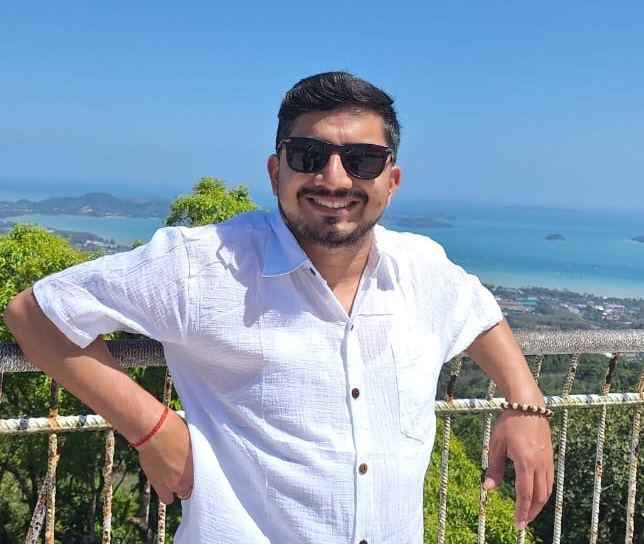
Madhav started working as a porter in 2001 and then moved on to work as a trekking guide. After working in the trekking and tourism industry for eight years, he co-founded Mosaic Adventure in 2009.
Madhav has trekked to most of the trekking destinations in Nepal, including Everest Base Camp Trek, Annapurna Base Camp, Annapurna Circuit Trek, Poon Hill Trek, Jomsom Muktinath Trek, Indigenous Peoples Trek, Langtang Valley Trek, Mardi Himal Trek, and all of the day hikes around Kathmandu.
He has also extensively traveled to other countries such as Australia, the USA, the UK, France, Hong Kong, Japan, China, the Philippines, the UAE, Saudi Arabia, Bahrain, Thailand, Turkey, and India. Madhav is the one who answers most of your questions about trekking and tours and helps to plan your trip by giving a personal touch.

